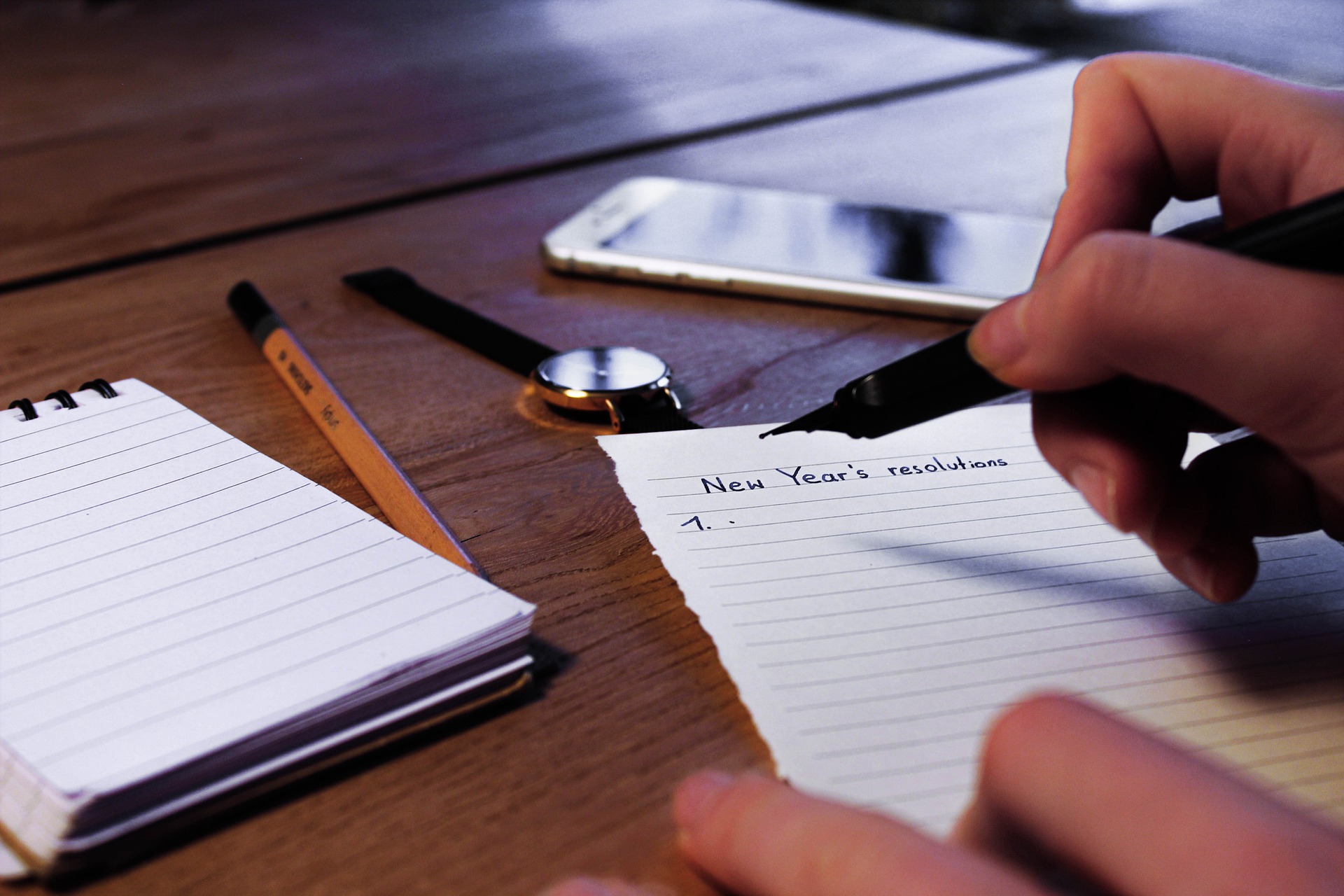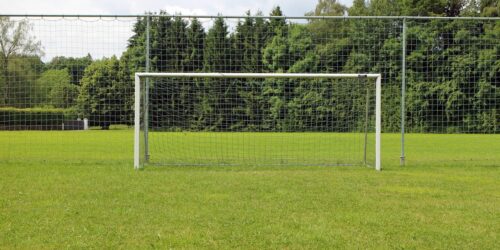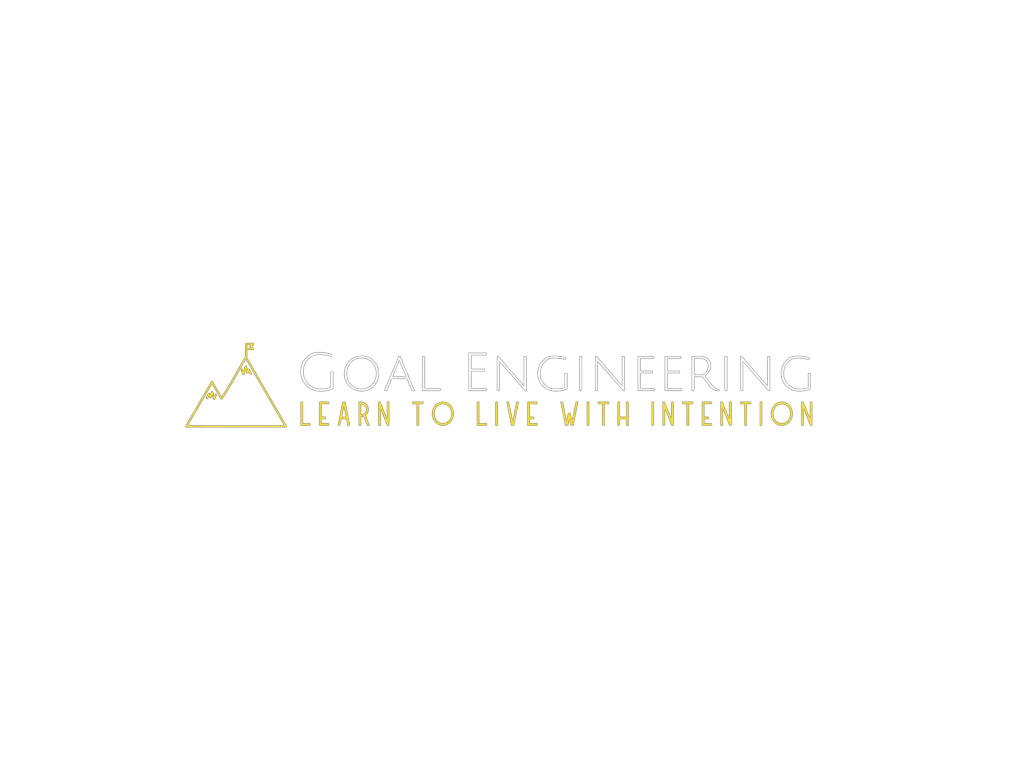Every year it’s the same story. You get pumped up in December at the thought of a new year and a new chance to try again, so you commit to an inspiring set of goals. But by February, you’ve given up completely. This is discouraging, frustrating, and may even make you want to give up on goals altogether. But there’s a simple reason why your new year’s resolutions fail and I’m going to show you how to fix it.
The main problem that makes your new year’s resolutions fail is that you’re trying to change too much all at once. Just like the old tale that a frog placed in boiling water will jump right out, you quickly try to get out of your new habits when they’re too big of a change from the way of life you’re used to.
It’s hard because you want to change so much, but if you’ll learn a few simple practices to slowly turn up the heat, you can stay consistent through February and reach any goal you set.
By simplifying your goals as I’m about to show you how to do, you’ll be well on your way to changing your life and becoming your best self!
To Cook a Frog, Don’t Boil Your Water First, Slowly Turn Up the Heat
Let’s say you’re craving pasta for lunch. What steps do you follow to make it?
You might begin by turning on the stove then filling a pot with water and setting it on the burner. You’d wait until the water is boiling before putting your spaghetti in, then give it a little time to cook before enjoying your meal.
But what if, instead of pasta, you fancied eating a frog?
According to an old fable, cooking a frog in the same way I’ve described above wouldn’t work. The frog jumps out of the boiling pot as soon as you put it in.
Rather than boiling the water first then putting the frog in, you must place the frog in a pot of room-temperature water then place the pot on the stove.
The idea is that the frog slowly heats up and doesn’t notice the gradual change. If we tried to do it like we cook our pasta, the sudden shock of the 212°F water would make our amphibian friend hop right out.
The moral of the story is that if you try to change the way things are too much, you will reject the change. But when you instead take your time to turn up the heat on the changes you want to make, you can handle sticking with it until you’ve reached your goals.
Your New Year’s Resolutions Fail Because You Are the Frog in Boiling Water
Let’s go back to the beginning, with your usual pattern of goal-setting each year.
It starts in December when you look to the new year ahead with excitement. You think about how great it would feel to lose some weight, earn more money, or take better care of your family, so you set some goals.
Hidden from your view is your current status quo, with all of your unhealthy habits and patterns. You don’t realize how ingrained they are in almost every aspect of life, so you don’t see how hard it will be to thrust yourself into an action plan where those don’t exist.
Your energy remains high going into January as you begin working on your plan to achieve your big goals. You experience some great progress at first. You might make it a week or two of going to bed early, getting up to exercise, focusing hard at work, and being kinder to your family.
But then the shock of this abrupt change of pace begins to catch up with you.
First, you miss one day. You try again but not many days later you fail for two days in a row. By the time February begins, you’ve thrown in the towel.
What happened? Let’s examine each piece of the frog in a pot of boiling water analogy to find out. We have the following components:
- Frog
- Hot pot of water
- Regular temperature water
- The stovetop burner
Each of these components is also present as you set goals, like so:
- Frog = you, or, your goals
- Hot pot of water = trying to change everything your life with your big new year’s resolutions
- Regular temperature water = the current status quo
- The stovetop burner = your ability to adjust the intensity with which you implement your goals
That last component is the most important and is the main source for determining whether your new year’s resolutions fail or not.
If you turn the heat up all at once and throw yourself into a bunch of goals that are as hot as a pot of boiling water, then you’ll jump right out, just like the frog.
But when you turn the heat on the burner up slowly by adjusting only a few habits at a time and making a long-term action plan for the big changes you want to make, you succeed at your goals.
How to Start Smaller in January So That You Don’t Let Your New Year’s Resolutions Fail
So you know that you need to take it easy as you begin working toward your new year’s resolutions. But how do you make that happen? Here are a few tips to get you started:
1. Only Set 4 Goals
Everything you do in life boils down to just four pillars:
- Faith
- Family
- Finances
- Fitness
Your main four might vary slightly. You might exchange the word “family” for “relationships,” for example. Whatever you decide on, it’s best to focus on just a few key areas of life.
Most often, you only need to change one little thing in each of these pillars to start making big improvements.
I recently began taking my son out on hikes twice a week. I’ve found that this one little habit helps me be healthier, work harder, and most of all improves my relationship with my boy!
As you cut your goals down to only four your inner perfectionist is going to start screaming. Resist the urge to succumb to that voice. Instead, promise yourself that you’ll narrow your goals down to just a few.
It’s better to accomplish only a handful of goals rather than none of them, like what happens when you set too many!
2. Work on Your Goals for Just 15 Minutes a Day to Begin
Imagine a “power hour” where you work on each of your four goals for just 15 minutes each. What would that look like? How would you feel afterward Here’s what the perfect one for me looks like right now:
- Faith: reading, praying, and meditating on my beliefs.
- Family: spending quality time with just one family member.
- Finances: reading an inspirational book to learn a new skill.
- Fitness: going on a run.
Just thinking about how you feel after a nice run is enough to inspire you to do it. Can you imagine how energized you’ll be after doing high-impact activities like these in all four of these pillars of life?
Experiment with what works best for you. Don’t be afraid to fail and don’t give up when you do. Here’s a little math to motivate you to keep going:
- 15 minutes a day in just one category of life for an entire year is 91 hours. Chances are that you’ll get better and be able to put more time to each goal, so the actual number is much higher.
- Setting big “boiling-water” goals to do 1 hour of work a day in each category and failing after just 2 weeks means you’ll only put in about 30 hours.
All it really takes to become successful is consistency, which you only get when you start small.
“Success is neither magical nor mysterious. Success is the natural consequence of consistently applying basic fundamentals.”
– E. James Rohn
3. Focus on Changing Only the “Routine” Part of Your Habits.
Everything you’re working on boils down to a habit, which is comprised of a cue, routine, and reward. Here’s an example of each of these:
- Cue: Your alarm goes off in the morning
- Routine: You hit the snooze button
- Reward: You get a little extra sleep
If I wanted better morning habits, I’d leave my cue of my alarm going off alone and change the routine to something like, “get out of bed and listen to an inspirational song.” Then the reward turns into the motivation to start the day by working hard.
You can try this with all of your goals and habits, whether it’s for your faith, family, finances, or fitness.
It also helps to put a system in place to increase the likelihood that you’ll execute your routine. And the best way to do this is by utilizing the 20-second rule.
4. Use the 20-Second Rule to Make Starting Your Habits Easier
I sleep in my workout clothes. When I get up in the morning, I only have to make a couple of tiny changes that take less than 20 seconds before I can start exercising.
When I began doing this a few months ago, I was having a hard time staying consistent with exercising in the morning. After making this tiny change, however, my success rate has skyrocketed.
That’s because of a little principle called activation energy. It takes energy to begin anything, from a chemical reaction to getting out of bed. If an action requires more power, then it’s harder to begin.
But you can control the amount of energy required to start your habits.
This idea came from Shawn Achor in his book The Happiness Advantage. Achor wanted to develop the habit of playing the guitar every day. He began by making a chart to put on his wall so he could check off every day that he practiced.
After his first attempt, he was disappointed with only a few checkmarks on his 21-day sheet.
Then he learned about activation energy and invested in a guitar stand so he could put his guitar out in his living room. Because it was right there and took him less than 20 seconds to begin practicing, Achor’s next attempt was successful with every day of the 21-day chart completed.
5. Analyze Where You Are in December Before Beginning in January
It’s easy to get caught up in the excitement of wanting to change your life and forget where you are currently. This can make you miss stumbling blocks, and, even more importantly, what your present “normal water temperature” looks like.
No matter where you are in life right now you’ve already got habits. The only question is whether they are good or bad.
Recognizing this is a major step toward improving your life.
Each time you want to change your habits, you set goals. But when you don’t examine the habits you already have, even the bad ones, you set yourself up to jump right out of your efforts to improve yourself.
Start by having a yearly review in December. Set aside one to two weeks to be constantly reflecting on how the past year went and where you are now.
Ask yourself the same questions you might ask in a weekly review, but change the timeline to reflect on the past year as a whole. You might, for example, ask yourself the following:
- What did I do well this year?
- Which goals have I still not accomplished?
- What good habits do I have that I want to keep?
- Do I still have any bad habits that I need to improve? What cues do I use for these that I can still take advantage of? Is there a routine could I use in place of the one I’m currently doing after each cue?
- What is my current status quo that I want to be careful not to disrupt as I work on my new year’s resolutions?
I love doing yearly reviews. They are one of the most significant factors that help me stick to my goals throughout the entire year and I believe they will be the same for you too.
What Are You Going to Do About What You’ve Learned?
You want to change your life. You know how to set goals. And you even know how to work hard at them.
But year after year your new year’s resolutions fail because you try to change too much all at once.
That makes for a very frustrating January and February. And it makes re-attempting your goals each year even more difficult, increasing the chances that you’ll eventually give up. I don’t want you to give up.
My hope is that you’ll take these lessons and apply them in your life so you can stick to your goals, reach your dreams, and become your best self.
Every time I read anything or for any amount of time, no matter how short, I ask myself two important questions:
- What did I learn?
- What will I do about it?
Consider your own answers to these as you reflect back on what you’ve read here.
Implementing just one of the suggestions I’ve given for sticking to your new year’s resolutions will make a huge impact on your ability to not fail at them.
Soon, you’ll be consistently sticking to your goals and living a life that lights you up inside!





